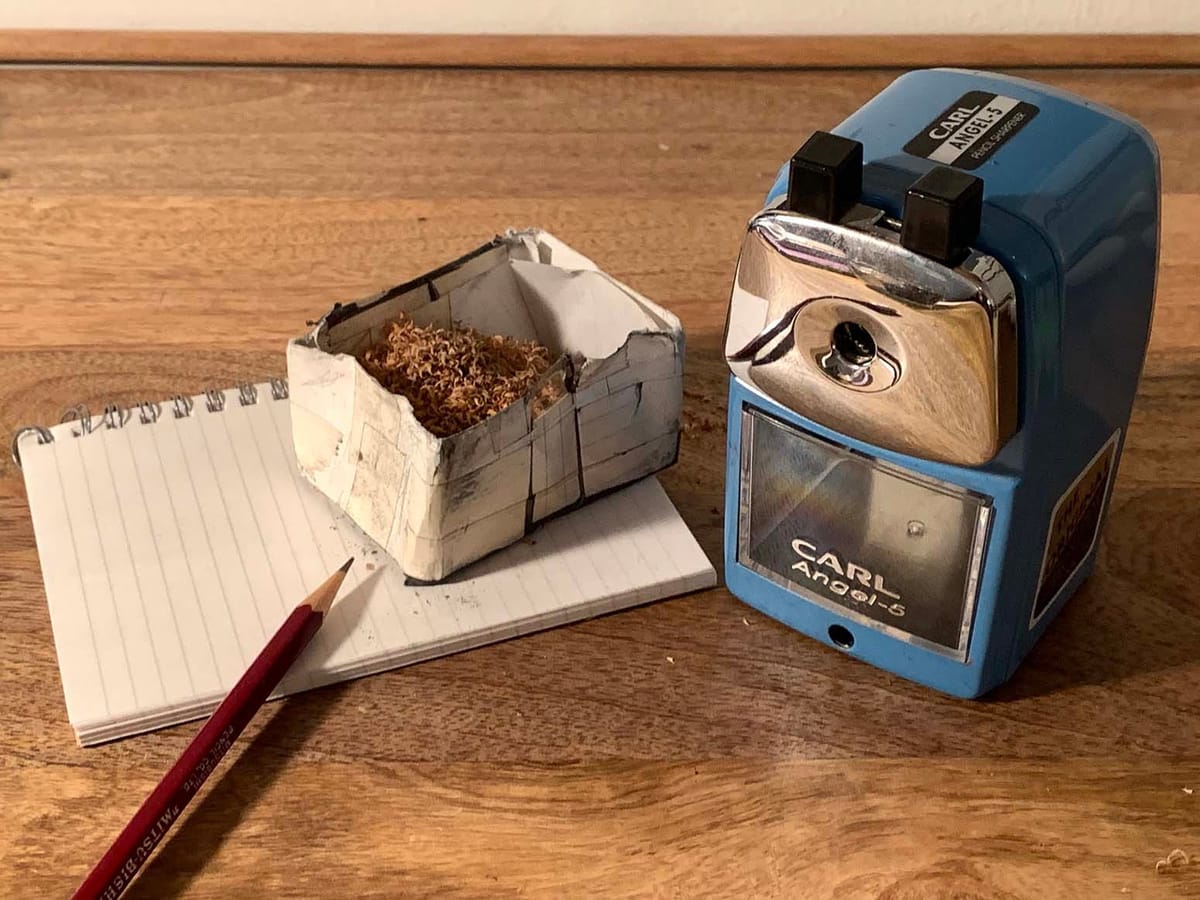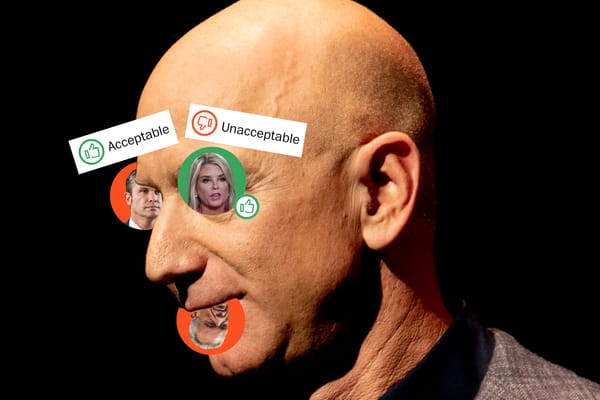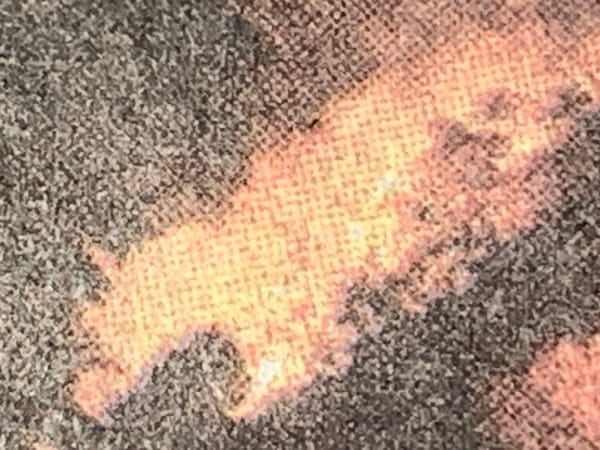INDIGNITY VOL. 3, NO. 9: Point of order.
DISPOSSESSIONS DEP'T.

EASY LISTENING DEP'T.

The Indignity Morning Podcast
YOU can have the Indignity Morning Podcast delivered separately to your electronic mail in-box! We don’t add subscribers automatically, we want you to be in charge! Head to Manage your subscription, where you can select and choose which sections to receive. More info here


DISPOSSESSIONS DEP'T.
Makeshift Pencil-Sharpener Drawer Made Out of Index Cards and Tape
WHEN DOES A stopgap solution become the thing itself? One way or another I ask myself this question about nearly everything.
This situation started with the pencil sharpener, a Carl Angel-5, a sturdy and high-quality device. Or really I guess it started with a book. The book was a spoof: How to Sharpen Pencils: A Practical and Theoretical Treatise on the Artisanal Craft of Pencil Sharpening, by David Rees. How to Sharpen Pencils is an odd little hardbound volume, an extremely silly deadpan gag beaten into a haunting meditation about substance and purpose.
The gag is that Rees—who brought the internet "Get Your War On" at the birth of the Global War on Terror—had gone into the business of sharpening pencils, as a piece of performance art but also as a literal paid enterprise. As in: people would literally mail him pencils to be sharpened and he would literally do it, by hand, in the high first-decade-of-the-21st-century anachronistic craftsman's mode, returning each pencil with its newly created point protected in a plastic display tube, accompanied by a bag of the collected shavings.
From there, Rees wrote a parody industrial manual about the art of sharpening one's own pencils. It is mostly wildly, sketch-comedy-level absurd ("Chapter 12: Psychological Risks Associated With Pencil Sharpening: Assessment and Coping Strategies," "Chapter 17: Mastering Celebrity-Impression Pencil Sharpening [CIPS]") but it is also obsessively focused on the genuine physical act of sharpening pencils.
The idea of it took hold. I didn't even like pencils, honestly. All my life, I had found pencils scratchy to use, at some deep, nerve-jangling level. But that made the thought of a really sharp one somehow more appealing.
I gave a copy of the book to my then-kindergartener for Christmas, along with some Rees-recommended General's Semi-Hex No. 2 pencils and a handheld pencil sharpener. About a year and a half later, with pencils needing more and more sharpening for school, it seemed practical to go ahead and buy the Angel-5, one of the single-burr hand-crank sharpeners Rees listed in the "Supplies" chapter. "Leaves pencils with an especially long point," he wrote.
It did! And does. The Angel-5 quickly and vigorously made our pencils impressively sharp, spilling the swiftly accumulated shavings into a plexiglass drawer. I rolled my eyes at the back-to-school supply lists calling for pre-sharpened pencils. We had a pencil sharpener!
And then, one day, I went into the kids' room to sharpen a pencil and found an empty cavity where the shavings drawer should go. Where was the shavings drawer? Nobody knew. We searched for it. I searched for it. No drawer.
The children's room was tiny and densely cluttered with things. Surely the drawer was somewhere. Maybe someone had requisitioned it as an accessory for the little superhero action figures and forgotten all about it. It would turn up.
In the meantime, there were pencils to sharpen. I got a 3-by-5 index card and checked it against the Angel-5's empty drawer compartment: 3 inches deep exactly. I got more index cards and some scotch tape and set about making a temporary drawer, folding and cutting and taping till I had a reasonably sturdy little open-topped box, reinforced at the seams. I slid it where the drawer belonged and I sharpened a pencil. A few shavings went the wrong way but mostly it worked.
The proper drawer never reappeared. I put it on my mental list of things we'd only see again when the day came that we emptied out the whole apartment, to move to a different one. Everyone kept sharpening their pencils with the nice pencil sharpener, all shiny chrome and gleaming light blue paint, into the little paper box. A few shavings would spill. Once in a while someone would knock it over and spill the whole mess on the floor.
Somewhere along the way, through some process now totally lost to memory, I ordered myself a package of Mitsu-Bishi 9850 HB pencils. The Mitsu-Bishi Pencil Co., LTD, despite sharing its triple-diamond logo and logo-based name with the industrial group that brought the world the Mitsubishi Mirage, the Mitsubishi Zero, and Three Diamonds brand tuna, is a completely separate operation from all of that, part of the Uni-Ball empire instead. The 9850 has deep burgundy paint, stamped with silver, and a white eraser. One of its facets reads, in small capital letters, "SMOOTH WRITING PENCIL FOR" and then, larger and in script, "Office Use."
The inscription is true. The Mitsu-Bishi 9850 writes with the firm, steady smoothness of refrigerated butter. Brought to a long, fresh point by the Angel-5, the 9850 revealed itself to be not simply a pencil I didn't dislike, but my new (and still) favorite writing implement. I scribbled longhand drafts and ideas in notebooks with graphite, where I formerly would have used gel pen. When the pencil line got too wide for my taste, I would sharpen it up again, sweeping up the stray shavings.
(I note here, because nothing is ever perfect, that the Mitsu-Bishi pencil body is some infinitesimal amount thicker than the Carl Angel-5 was built to handle, so that when the Angel-5 clamps onto it and pulls it toward the spinning burr, it can leave tiny nicks in the burgundy finish. I don't care. The point is worth it.)
Years passed. Pencils dwindled down to nubs and more pencils were acquired. The paper box grew more and more battered, the index-card lines fading away where they showed, the taped seams blackened with accumulated graphite powder.
Finally, we did move. The missing drawer did not reappear in the process. The pencil sharpener took up its place on this or that desk in the new apartment, attended by a few loose shavings.
All my adult life, I've held a half-submerged belief that the way the household is running—the way I'm running my life—is somehow provisional, that the real grown-up arrangements will kick in eventually. Those drifts and cairns of books and papers will be shelved someday; the tea packages and bags of spices won't be falling out of the kitchen cabinets forever; I won't always be re-tightening the hinges of the doors of those kitchen cabinets with a butter knife as a screwdriver. Some future version of me would not be sharpening pencils into a grubby homemade paper box.
And then, in September of last year, it occurred to me that I could make this particular future happen. The pencil sharpener drawer was a part, and companies make replacement parts for their products. I had the sense I'd had this thought before, and failed at executing it, but this time it seemed to work. Carl Manufacturing USA had a website; the website had a parts section; the parts section had the drawer. It was four dollars, plus five dollars shipping.
I ordered it. A month later, in October, I got an email saying my order status had been updated to "shipped." I kept waiting. A month after that, in November, I realized there was still no drawer in sight, and I checked the tracking number. The last and only recorded event was "Shipping Label Created." I sent the company an email, asking if it would be possible to get a replacement.
In December, inspired by the idea that the drawer was on its way, I went online to Muji and ordered a set of eight new white dinner plates, to replace our chipped assortment of three different kinds of plates in three different colors. I threw in eight matching, stackable drinking glasses, to take over for some of the assortment of jam jars and honey jars we drink out of. Plus some notebooks, to write in with the sharpened pencils.
January arrived. The pencil drawer and the plates and the drinking glasses did not. My project of material improvement had vanished into the indeterminacy of online commerce. I emailed Carl Manufacturing USA again. I emailed Muij. Muji wrote back that there were problems with the shipping system, and "the order did expire due to not having been shipped." Carl wrote back to say they were shipping a new drawer.
I ordered a replacement shipment of plates and glasses. They came. I put them in the cabinets, with the hinges tightened, and we started using them. Then, a while after that, I opened the mailbox and found a little cardboard box from Carl. In it was the drawer, gleaming and solid and new.
I pulled out the old grubby paper box for the last time, trying not to spill any more shavings, and seated its proper replacement in the pencil sharpener. It was smooth and clean. There were no gaps around it. It looked, honestly, a little out of place.

INDIGNITY is a general-interest publication for a discerning and self-selected audience. Is it for you? Make it happen!






![Screencap from the video, caption "[Toshiaki] Nice and chewy." Buldak Chicken Carbonara $1.38/pack](/content/images/size/w600/2025/01/ramen-chewy-2025-01-10-at-7.38.57-PM.jpg)